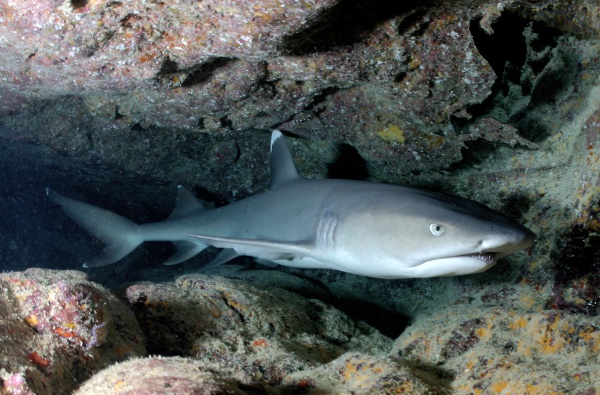Facts About Whitetip reef shark
The whitetip reef shark, a member of the Carcharhinidae family, is the sole species within its genus, Triaenodon. These sharks are relatively small, typically measuring no more than 1.6 meters in length. They feature a slender build, a short but broad head, and distinctive white tips on their dorsal and caudal fins. Found throughout the Indo-Pacific region, from South Africa to Central America, they usually inhabit clear waters at depths between 8 and 40 meters. By day, they rest in caves, emerging at night to hunt for bony fish, crustaceans, and octopus.
Whitetip reef sharks are viviparous, meaning their embryos develop inside the mother, sustained by a placental connection. While they are generally not aggressive towards humans, spear fishers should exercise caution, as these sharks might attempt to snatch their catch, potentially leading to a bite. Although they are caught for food, consuming them can cause ciguatera poisoning. The IUCN has listed the whitetip reef shark as Near Threatened due to population declines caused by unregulated fishing.
Eduard Rüppell first described the whitetip reef shark, later placing it in its own genus, Triaenodon. Morphological traits confirm its belonging to the Carcharhinidae family. These sharks are widespread across the Indo-Pacific, primarily associating with coral reefs. They exhibit unique feeding behaviors, often wriggling into crevices to capture their prey.
Reproduction involves females giving birth to 1-6 pups after a gestation period of 10-13 months. Mating is quite a spectacle, with multiple males closely following a female and performing courtship behaviors. Whitetip reef sharks grow slowly, reaching sexual maturity at around 1.1 meters in length.
Generally, whitetip reef sharks do not pose a threat to humans and might approach swimmers out of curiosity. However, overfishing poses a significant threat to their populations. Conservation efforts are essential to prevent further declines and ensure the survival of this fascinating species.

 Ecuador
Ecuador